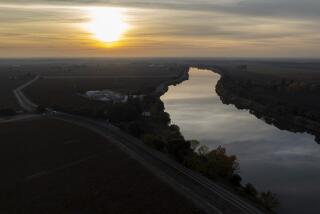Implications of desalination
- Share via
Re “Oceans of water,” editorial, July 28
While the editorial dutifully lists the problems associated with current desalination systems that use open-ocean power-plant intake pipes as their source of water, it endorses the Poseidon Resources Corp. plant at Carlsbad, which proposes to use just such intake pipes with their attendant marine-mortality problems. The Times ought to be recommending the responsible way to desalinate ocean water that avoids killing marine life.
This can be accomplished by using intake pipes placed below the ocean floor, which is being tested at Long Beach. Another element of responsible desalination is the disposal of the hypersaline brine and chemicals used in the desalination process. Rather than using the ocean as a dump once again, the brine should be disposed of in adjacent sewer treatment plant outfall pipes that would dilute the hypersaline discharge to normal salinity. The chemicals would also be removed or diluted before discharge into the ocean.
There are responsible ways to desalinate ocean water in California, but the Poseidon proposal at Carlsbad is not it. California should wait for a responsible desalination plan. Our ocean is troubled enough as it is.
Jan D. Vandersloot
Newport Beach
The Times does not mention the fact that along with Poseidon’s desalination plant will come the privatization of water supplies. Do we really want that? Many towns and cities have tried it across the country and in Canada, and many of them found that private water sources are incompatible with the well-being of the public. Control of the water supply is like allowing someone to control the air we breath.
In addition, recovering water, as is done by the groundwater replenishment system in Orange County, is a much cheaper process than desalinating seawater.
Nancy Donaven
Huntington Beach
Your balanced discussion of desalination as a strategy for our drought conditions is welcome. Even more welcome is your emphasis on conservation as a part of any strategy. Southern California is basically a desert, as ecologists have long recognized. The desert conditions are moderated by the ocean on one side and the mountains on the other, but like other deserts, almost all our water must come from elsewhere.
Thus, it makes no sense for us to plant as though we lived in Europe or New England. Large, water-hungry lawns, trees and other plants that require regular watering and myriad golf courses are not rational choices, particularly when there are many native plants adapted to local conditions that would require practically no additional water. The use of these plants and a no-lawn policy would go a long way to securing our water future.
James M. Smith
Los Angeles
More to Read
Sign up for Essential California
The most important California stories and recommendations in your inbox every morning.
You may occasionally receive promotional content from the Los Angeles Times.













